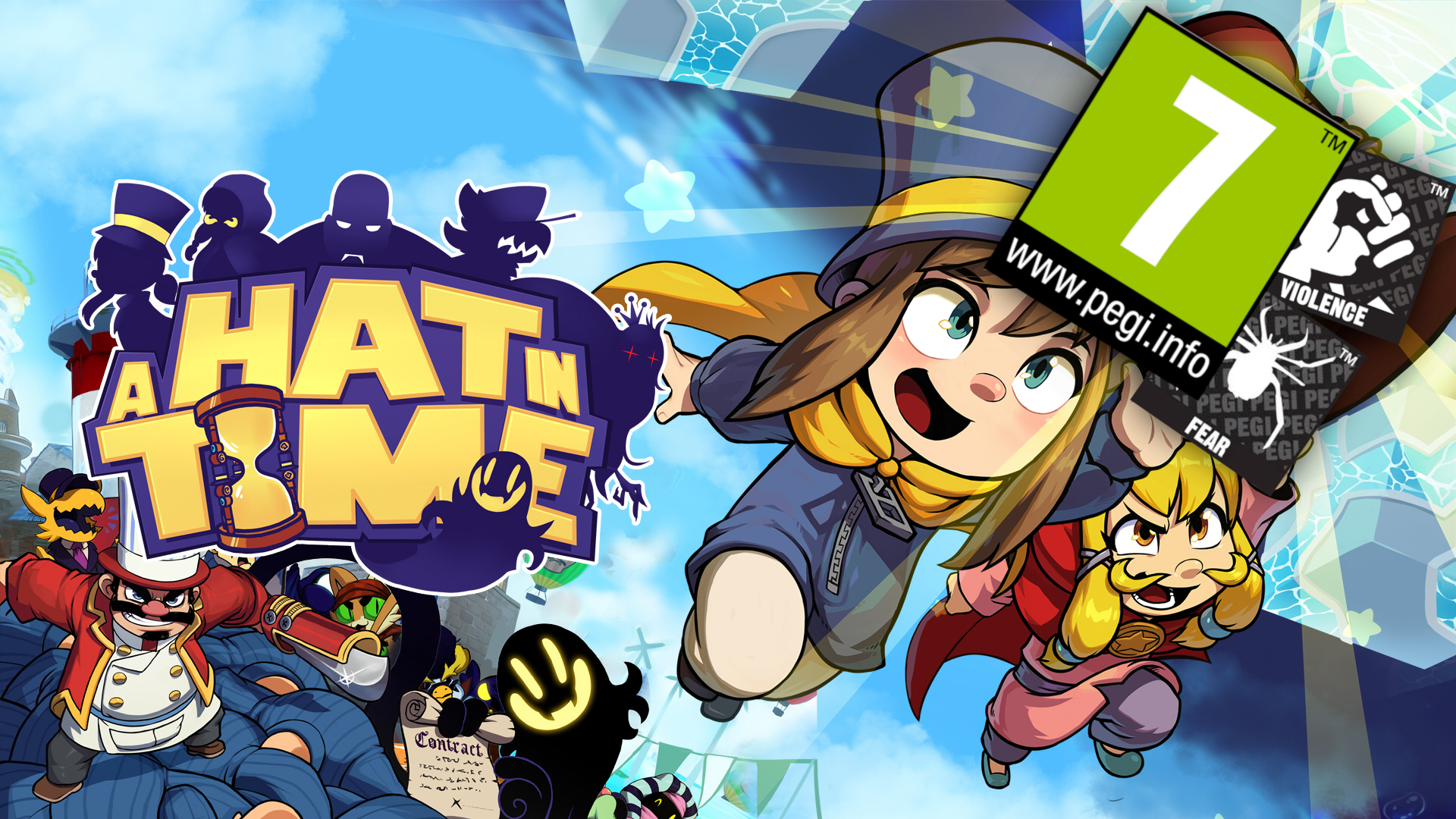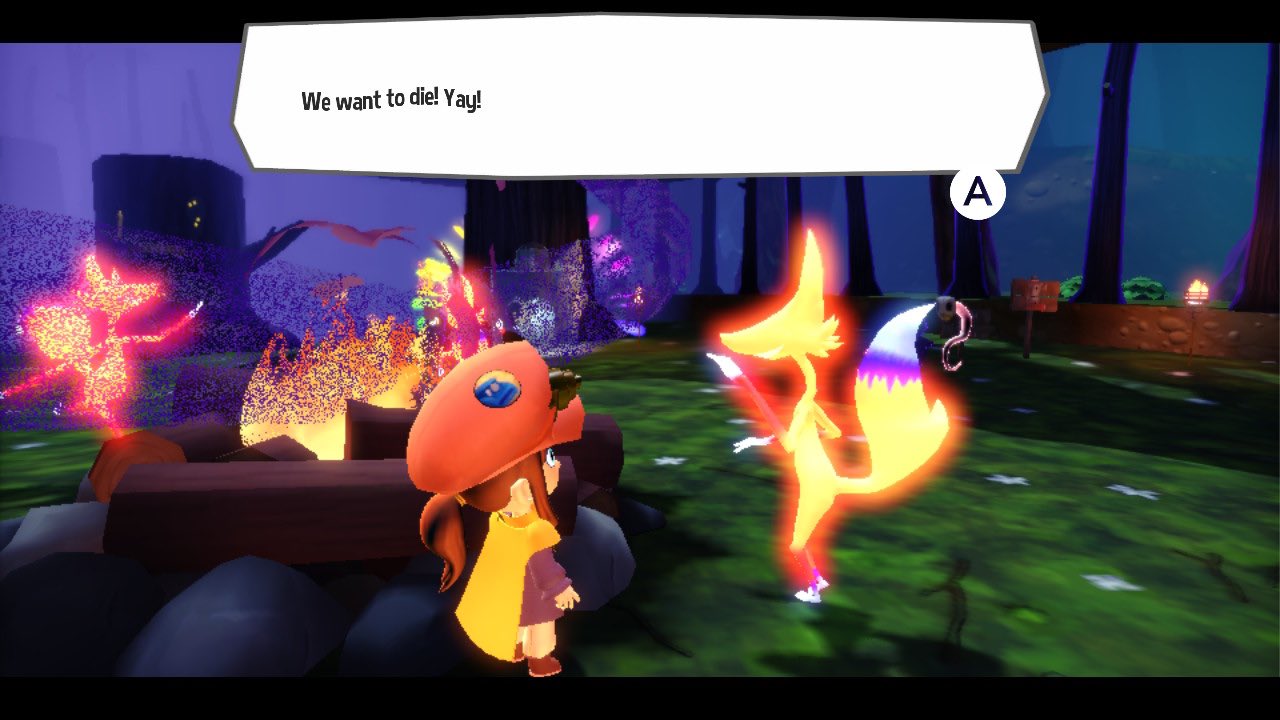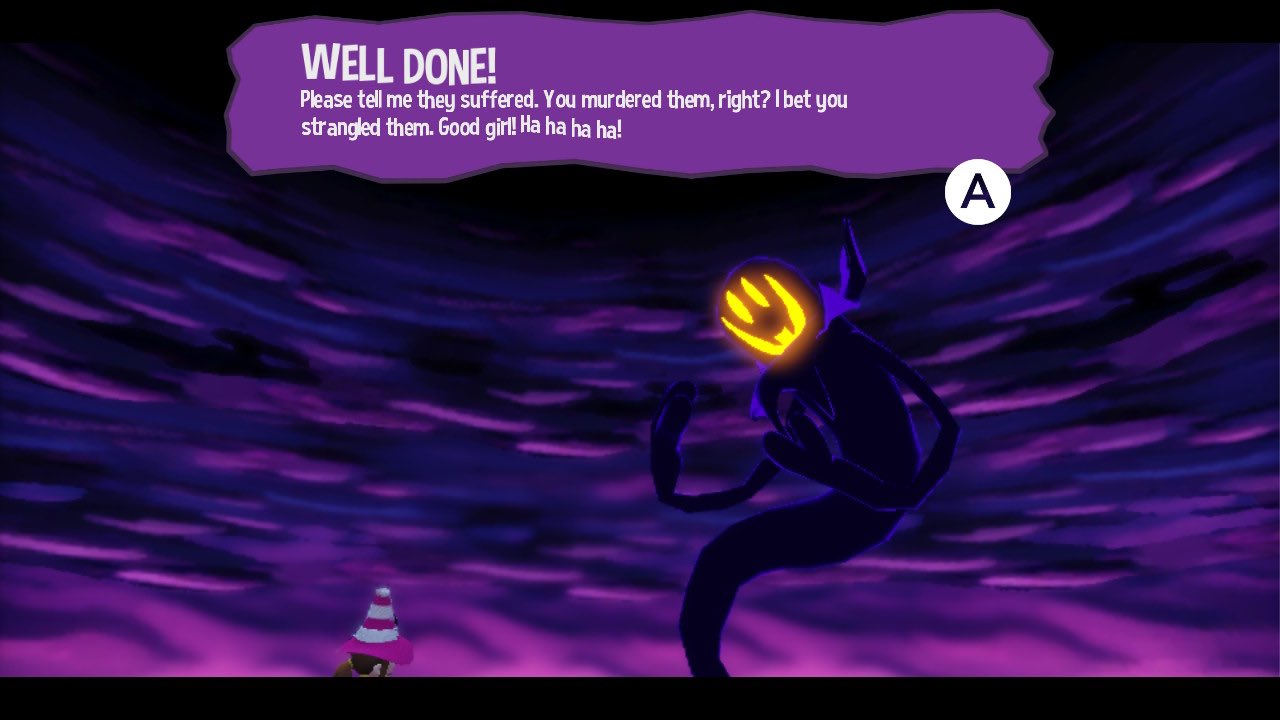Behind The Scenes Of A PEGI Rating

We have been enjoying A Hat In Time in my family. Having played through games like Yooka-Laylee, New Super Lucky's Tale and Mario Odyssey, it was perfect for us. It's a combination of open-world platform adventure with a super cute hero.
It's rated PEGI 7 for "non-realistic violence in a child-friendly setting or context, for violence that lacks any apparent harm or injury to fantasy or mythical beings and creatures and for pictures or sounds likely to be scary to young children".
The PEGI rating is accompanied by a helpful explanation of the rating. "The game features non-realistic violence in a childlike setting when enemies are attacked with the player’s umbrella, they vanish in a puff. Also, it contains pictures and sounds likely to be scary, for example, ghosts and a stealth level in which the player must remain unseen by a scary black creature."
However, as we played there was one level that contained some content I didn't expect. There's a level where you come across three fox spirits who tell you they "want to die". You collect paintings to make their fire burn bright and consume them.

Then once you have completed the task you are congratulated by a dark spirit who says "tell me they suffered," and "I bet you strangled them, good girl."

Of course, you don't really see what the ghoul says, but the phrasing and context made me wonder how this fit with the PEGI rating for children seven years old and over. I tweeted about it and was pleased that the VSC Rating Board popped up to clarify. As they always do when these kinds of queries are raised, they checked the rating was spot on and could confirm it was correct.
More interesting, however, was to peek behind the curtain and hear how the examiner had approached what is quite a nuanced issue for rating Hat in Time.
We’ve taken a look at the sequences you flagged in ‘A Hat in Time’ and we’re content that these are appropriately placed at PEGI 7. In terms of the ‘horror’ elements, these are certainly too intense for a PEGI 3. However, given the fact that nothing violent is shown, and given both the relatively cartoonish nature of the presentation and the fantastical ‘haunted house’ setting, it sits well at PEGI 7 where the Guidelines allow “Pictures or sounds likely to be scary or frightening to young children”.
After some back and forth they also went on to outline their thinking about the darker elements of the narrative that I had encountered.
With regard to the fire spirits, we don’t think children are likely to understand the scene this way. For a start, these are clearly not ‘real’ foxes but fantastical spirit animals, which are seen to be able to create and withstand flames. Hat Girl’s mission is not to help the spirits take their own lives (which makes little sense, given they are already spirits!) but to collect paintings and add them to the fire so the spirits can be re-absorbed and the fire put out, deactivating the – literal – fire wall. The fire spirits are not shown to ‘die’ but are simply sucked into the fire, actually thanking Hat Girl for completing her mission and allowing this to happen. While the Snatcher, who needs the fire wall to be put out, subsequently congratulates Hat Girl on "murdering" the spirits, and expresses his hope they suffered, this is simply because he’s a stereotypically villainous character. Importantly, however, the player knows that this is not what happened at all. The comment made by the fire spirits about wanting to ‘die’ is simply part of their fantastical character, as supernatural beings obsessed with fire and death, rather than a realistic statement made by a realistic character.
This level of consideration was beyond what I imagined the game rating examiners applying. It's both fascinating and heartening to hear of this level of attention to how younger players may experience and interpret what was happening.
In particular, it was good to see the VSC Rating Board not only guarding children against encountering content that may be inappropriate or upsetting but also being robust at not over-blocking content that would be interpreted more innocently.
I came away from the conversation with greater respect for the work of the rating board, as well as having reflected on the appropriateness of A Hat In Time. I hope that sharing this with you here, offers you the same window on this important age rating work.





